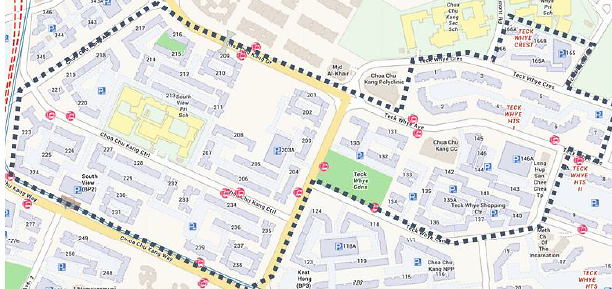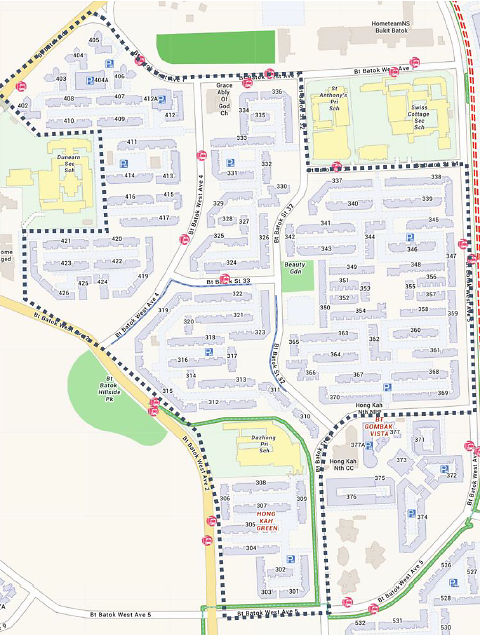SINGAPORE: A project involving the release of specially bred mosquitoes to fight dengue will be widened to include more neighbourhoods, following successful field tests in Tampines and Yishun.
From May, the National Environment Agency (NEA) will release male Wolbachia-Aedes mosquitoes to more than 200 blocks in Choa Chu Kang and Bukit Batok.
NEA said in a media release on Wednesday (May 6) that more than 90 per cent of the urban Aedes mosquito population has been suppressed at Yishun and Tampines under the agency’s Project Wolbachia.
READ: Dengue cases expected to exceed 16,000 cases unless immediate action taken: NEA
READ: Weekly dengue cases remain ‘high’; total deaths this year rise to 7: NEA
The 207 blocks at Choa Chu Kang, Keat Hong and Hong Kah North were selected as the next testing ground due to their “consistently high Aedes mosquito populations, and hence higher risk of dengue clusters forming there”, said NEA.
The mosquitoes will not be released directly into homes, but at public spaces including stairwells, void decks and open spaces between blocks of high-rise homes.
“MORE TARGETED APPROACH”
NEA explained that the total area of the new release sites is smaller than the test areas in Yishun and Tampines, resulting in a more targeted approach.
The objective is to “test different strategies, to determine the most effective and impactful approaches for future wider scale deployment for Project Wolbachia,” said the agency.
READ: More mosquitoes or mutating virus? Experts have different views on dengue spike

Location map of release site at Choa Chu Kang. (Graphic: NEA)
At the Choa Chu Kang and Bukit Batok sites, the study will “zero in on selected neighbourhoods with consistently high Aedes aegypti mosquito populations”, said Director of NEA’s environmental health institute Associate Professor Ng Lee Ching.
The aim, this time round, is to preemptively suppress the populations.
In contrast, the tests in Yishun and Tampines adopted more of a “rolling approach”, with the gradual expansion of release sites to adjacent neighbourhoods within each town, said Assoc Prof Ng.

Location map of release site at Keat Hong. (Graphic: NEA)
NEA said that an average of six or fewer male Wolbachia mosquitoes per person will be released regularly.
While residents may see more of these male mosquitoes, they will not attract female mosquitoes to the area, said the agency.
“Residents do not have to do anything differently, and should continue to stay vigilant and carry out mosquito control procedures as usual,” added NEA.

Location map of release site at Hong Kah North. (Graphic: NEA)
65-80% FEWER DENGUE CASES AT YISHUN, TAMPINES STUDY SITES
According to data from 2019, there were 65 to 90 per cent fewer dengue cases at the Yishun and Tampines study sites where the male Wolbachia mosquitoes were released, compared to sites without releases, said NEA.
In areas with reduced urban Aedes aegypti mosquito populations, fewer male Wolbachia-Aedes mosquitoes were also needed to maintain the suppression, added the agency.
READ: 22 new dengue clusters emerge across Singapore over two days
Phased field studies have been conducted at Yishun and Tampines since 2016 to evaluate the use of male Wolbachia mosquitoes to suppress the urban Aedes aegypti mosquito populations.
NEA explained that when male Wolbachia-Aedes mosquitoes mate with urban female Aedes aegypti mosquitoes, the resulting eggs do not hatch.
“Over time, continued releases of male Wolbachia-Aedes mosquitoes are expected to gradually reduce the urban female Aedes aegypti mosquito population, and hence lower the risk of dengue transmission.”
NEA said that it will continue with the current releases in the ongoing Phase 4 of Project Wolbachia at Yishun and Tampines. This involves a total of 533 blocks – about a 14-fold expansion compared to Phase 1 in 2016.
With two-thirds of the year still to go, NEA is already warning that the number of dengue cases in 2020 is projected to surpass 2019’s figure, unless “immediate measures” are taken.
NEA said as of mid-April, almost 5,800 dengue cases were reported – more than double that over the same period in 2019.




